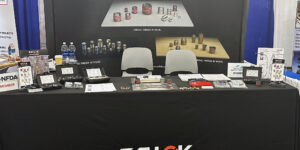Automotive: WorldAutoSteel Releases Preliminary Styling for Future Steel Vehicle
Future Steel Vehicle (FSV) Program (Detroit, MI) has produced early styling sketches based on the packaging studies initiated in the Phase I research, which were released today by WorldAutoSteel member companies. FSV?s technical team, which includes EDAG, Quantum Technologies, Inc.,…
Posted: August 15, 2008
Future Steel Vehicle (FSV) Program (Detroit, MI) has produced early styling sketches based on the packaging studies initiated in the Phase I research, which were released today by WorldAutoSteel member companies.
FSV?s technical team, which includes EDAG, Quantum Technologies, Inc., Shanghai Fuel Cell Vehicle Powertrain Co., Ltd /Tongji and WorldAutoSteel material experts, is considering four technical specification options for the proposed year 2015-2020 vehicle: electric (EV) and plug-in hybrid electric (PHEV) vehicles for four or more passengers; and plug-in hybrid electric (PHEV) and fuel cell (FCV) vehicles for five passengers. The flexibility of powertrain component packaging coupled with the qualities of AHSS will enable these vehicles to maintain current and future consumer expectations for interior comfort, while significantly reducing greenhouse gas emissions throughout the entire life cycle.
"For the sake of the environment, it is critical to look at Future Steel Vehicle, as all vehicles, from a life cycle assessment (LCA) perspective," said Edward Opbroek, director, WorldAutoSteel. "Based on the recent LCA study and model* developed at the University of California Santa Barbara, implementation of more efficient powertrain systems elevates the importance of the emissions from material production, placing greater emphasis on selecting a low greenhouse gas-intensive material such as steel."
Opbroek noted that with the combination of alternative powertrains and AHSS, all four FSV types will achieve well below the emission requirements proposed around the world. "Compared to other materials used to reduce vehicle weight, these advanced high-strength steels produce five to 15 times less greenhouse gas emissions during the material manufacturing phase, which greatly reduces a vehicle?s life cycle carbon footprint," said Opbroek.
WorldAutoSteel?s FSV program is in its first phase with a careful evaluation of next-generation vehicle technologies that respond to the challenges of increasing fuel efficiency, reducing GHG emissions and improving safety. Inherent in these technology changes are opportunities to optimize the vehicle?s structure that will minimize weight and enhance the system?s overall performance.
The resulting vehicle architecture will feature the latest portfolio of AHSS from around the world, allowing engineers and designers to reduce the total mass of the vehicle design without sacrificing safety or packaging requirements. These two issues become increasingly pertinent in future vehicle designs as engineers look to package new elements like batteries, electric motors and even hydrogen tanks into a vehicle that will most likely be used in more dense traffic and urban environments.
While new powertrain technologies and lower-mass vehicles have a direct impact on fuel consumption, they will also have a major impact on GHG. Improved AHSS designs will reduce a vehicle?s GHG footprint during its use phase; but steel also has the added benefit of lower GHG emissions resulting from the energy needed during the production of steel and the steel recycling rate versus other primary materials.
"We?re not just looking at the vehicle design and its impact on GHG at the tailpipe,? says Jody Shaw, manager, technical marketing and product research, U.S. Steel Corp. and chair of the FSV Program. ?We?re concerned with the whole life cycle of the vehicle, from the emissions produced and energy used to create raw materials, all the way to the impact of recycling. If the whole life cycle is not taken into account, there is the distinct possibility of having a net increase in greenhouse gasses if the wrong material choice is made. This isn?t just speculation ? we have very clear models that demonstrate this."
WorldAutoSteel and its global engineering partners will develop FSV Phase 1 through 2008, looking to begin Phase 2, concept designs, in early 2009. For electronic images and information on the FSV program, visit www.autosteel.org
*Life Cycle Greenhouse Gas Emission Assessments of Automotive Materials: The Example of Mild Steel, Advanced High Strength Steel and Aluminum in Body in White Applications, by Dr. Roland Geyer University of California at Santa Barbara and David Bren School of Environmental Science and Management, December 2007









